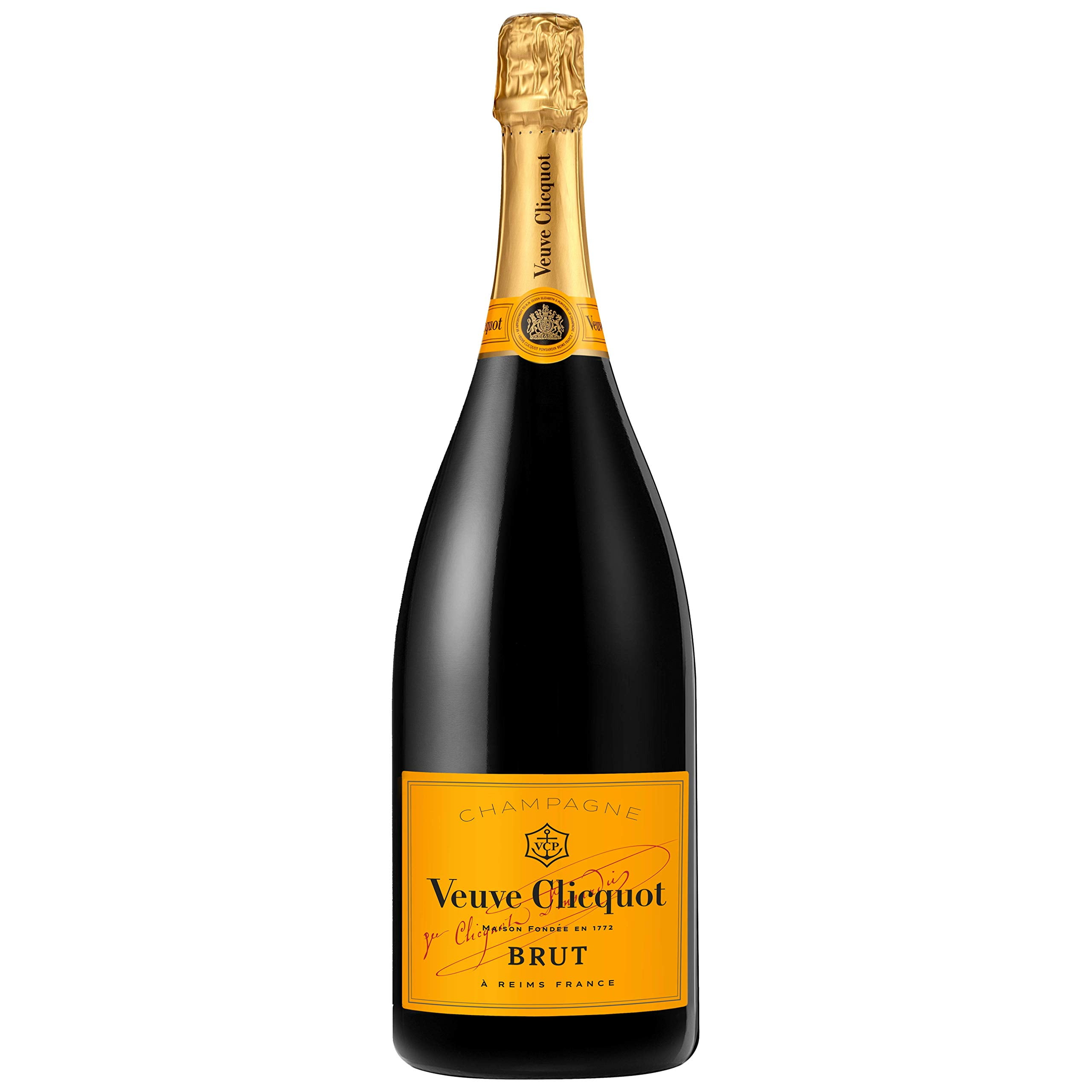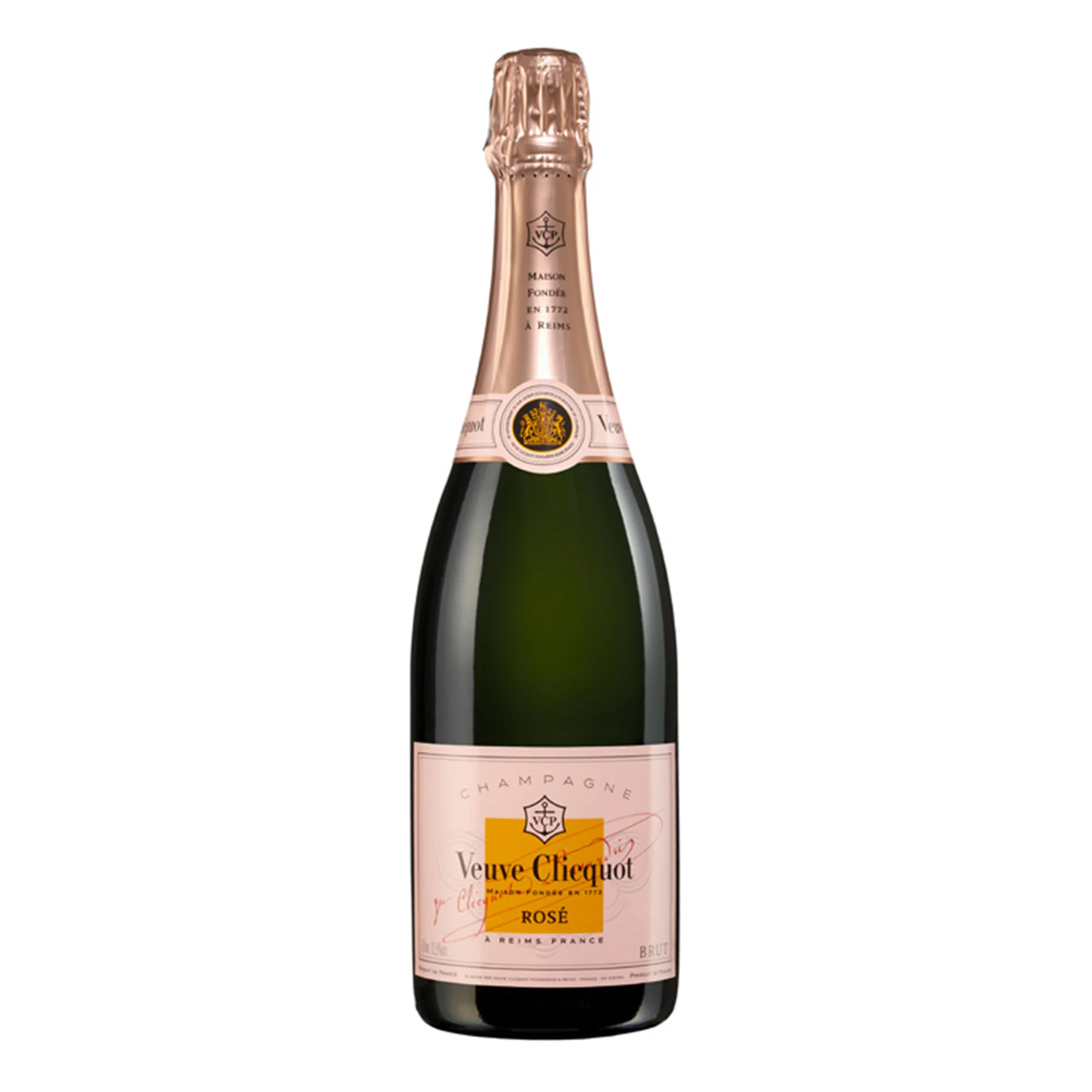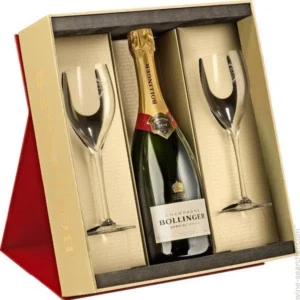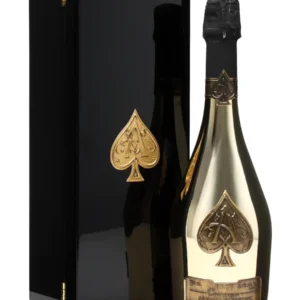Description
Veuve Clicquot – Veuve Clicquot Brut.
Veuve Clicquot
Veuve Clicquot, Yellow Label is the signature champagne of the House. Dominated by Pinot Noir, it offers the perfect balance of structure and finesse. Golden-yellow in color, with a foaming necklace of tiny bubbles. It is pleasing to the nose; initially reminiscent of yellow and white fruits, then of vanilla and later brioche. Note the fine balance between the fruity aromas coming from the grape varieties and the toasty notes, the result of the three years of bottle aging. The first sip delivers all the freshness and strength so typical of Veuve Clicquot Yellow Label with a symphony of fruit following (pear, lemon). It is a true member of the Brut family, well-structured, admirably vinous.
Champagne Veuve Cicquot, pleasing to the nose, reminiscent of white fruits and raisins, then of vanilla and later of brioche. The aroma lingers on the palate, with each spice or fruit note very distinct. Veuve Clicquot Yellow Label manages to reconcile two opposing factors, forcefulness and finesse, and holds them in perfect balance.
Veuve Clicquot, Brut Champagne founded in Reims in 1772, the House of Veuve Clicquot remains true to its motto: “Only one quality, the finest.” In 1805, Madame Clicquot took the reins of the House and became one of the first businesswomen of modern times, acquiring the epithet “la grande dame of Champagne.” Her visionary spirit and innate sense of French “art de vivre” live on today. Her iconic cuvée, Brut Carte Jaune, is synonymous with more than two centuries of know-how and an exceptional heritage. The colour of the sun, it symbolizes the values of audacity and optimism that the House has carried for 250 years.
Veuve Clicquot Brut – Veuve Clicquot Rose Champagne
Veuve Clicquot, Polo Classic associated with luxury, celebration, and romance, the region, Champagne, is home to the world’s most prized sparkling wine. In order to bear the label, ‘Champagne’, a sparkling wine must originate from this northeastern region of France—called Champagne—and adhere to strict quality standards. Made up of the three towns Reims, Épernay, and Aÿ, it was here that the traditional method of sparkling wine production was both invented and perfected, birthing a winemaking technique as well as a flavor profile that is now emulated worldwide.
Veuve Clicquot, Yellow Label is the signature champagne of the House. Dominated by Pinot Noir, it offers the perfect balance of structure and finesse. Golden-yellow in color, with a foaming necklace of tiny bubbles. It is pleasing to the nose; initially reminiscent of yellow and white fruits, then of vanilla and later brioche. Note the fine balance between the fruity aromas coming from the grape varieties and the toasty notes, the result of the three years of bottle aging. The first sip delivers all the freshness and strength so typical of Veuve Clicquot Yellow Label with a symphony of fruit following (pear, lemon). It is a true member of the Brut family, well-structured, admirably vinous.
Champagne Ceuve Clicquot – Veuve Clicquot Pronunciation
Veuve Clicquot, Yellow Label is the ultimate reflection of the superb vineyards and consistent nature of the house style. Grapes from as many as 50 to 60 different Crus go into the blending of Brut Yellow Label and The Chef de Caves draws on priceless reserve wines to achieve the total consistency of quality and taste.
Veuve Clicquot, Champagne Price produced in Champagne, a small wine producing region in the northeast of France. Maison Veuve Clicquot is located in Reims, the largest city in the Champagne province.
Veuve Clicquot, Yellow Label he blends 30-45% reserve wines with grapes from as many as 50 to 60 different crus. The Pinot Noir predominance (50-55%) provides the structure that is so typically Veuve Clicquot, while Chardonnay (28-33%) adds the elegance and finesse essential in a perfectly balanced wine, and a touch of Meunier (15-20%) rounds out the blend.
The long aging in our Crayères (3 years minimum for Yellow Label) gives silkiness to the Champagne.
Veuve Clicquot Price, With nearly negligible exceptions, . These can be blended together or bottled as individual varietal Champagnes, depending on the final style of wine desired.Chardonnay, the only white variety, contributes freshness, elegance, lively acidity and notes of citrus, orchard fruit and white flowers.Pinot Noir and its relative Pinot Meunier, provide the backbone to many blends, adding structure, body and supple red fruit flavors.
Champagne Veuve Clicquot – Veuve Clicquot Rose
Wines with a large proportion of Pinot Meunier will be ready to drink earlier, while Pinot Noir contributes to longevity. Whether it is white or rose most Champagne is made from a blend of red and white grapes—and uniquely, rosé is often produce by blending together red and white wine A Champagne made exclusively from Chardonnay will be labeled as ‘blanc de blancs,’ while ones comprised of only red grapes are called ‘blanc de noirs.
Veuve Clicquot, .A term typically reserved for champagne and, sparkling wine , non-vintage or simply “NV” on a label indicates a blend of finished wines from different vintages (years of harvest). To make non-vintage champagne typically the current year’s harvest (in other words, the current vintage) forms the base of the blend. Finished wines from previous years, called “vins de reserve” are blended in at approximately 10-50% of the total volume in order to achieve the flavor, complexity, body and acidity for the desired house style. A tiny proportion of Champagnes are made from a single vintage











Reviews
There are no reviews yet.